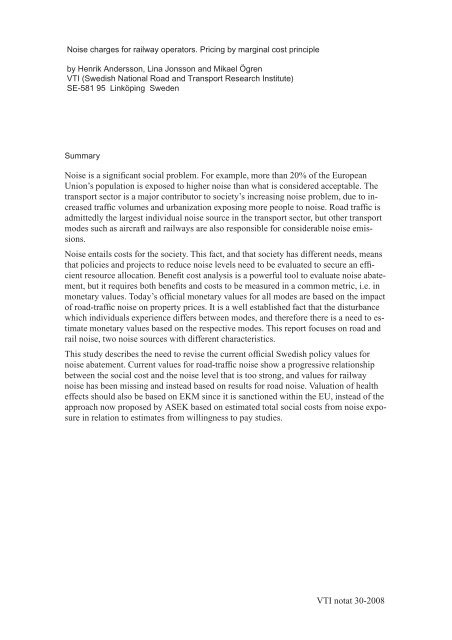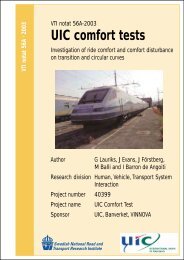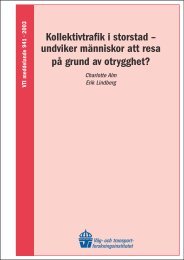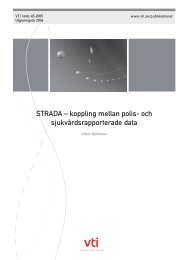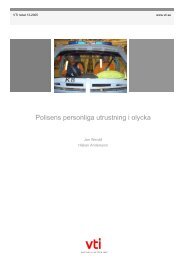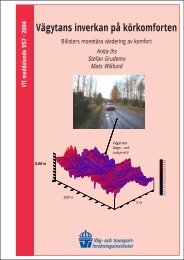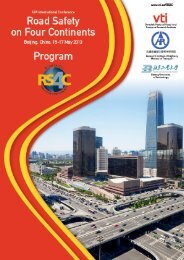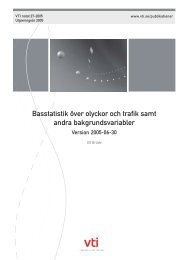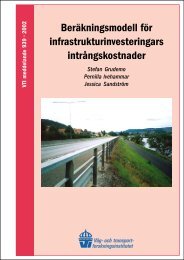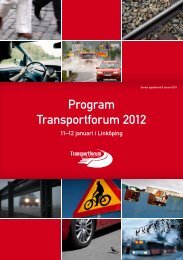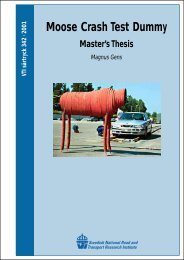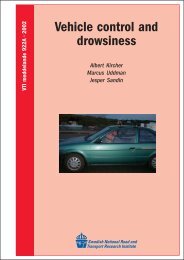Forskningsområde - VTI
Forskningsområde - VTI
Forskningsområde - VTI
You also want an ePaper? Increase the reach of your titles
YUMPU automatically turns print PDFs into web optimized ePapers that Google loves.
Noise charges for railway operators. Pricing by marginal cost principle<br />
by Henrik Andersson, Lina Jonsson and Mikael Ögren<br />
<strong>VTI</strong> (Swedish National Road and Transport Research Institute)<br />
SE-581 95 Linköping Sweden<br />
Summary<br />
Noise is a significant social problem. For example, more than 20% of the European<br />
Union’s population is exposed to higher noise than what is considered acceptable. The<br />
transport sector is a major contributor to society’s increasing noise problem, due to increased<br />
traffic volumes and urbanization exposing more people to noise. Road traffic is<br />
admittedly the largest individual noise source in the transport sector, but other transport<br />
modes such as aircraft and railways are also responsible for considerable noise emissions.<br />
Noise entails costs for the society. This fact, and that society has different needs, means<br />
that policies and projects to reduce noise levels need to be evaluated to secure an efficient<br />
resource allocation. Benefit cost analysis is a powerful tool to evaluate noise abatement,<br />
but it requires both benefits and costs to be measured in a common metric, i.e. in<br />
monetary values. Today’s official monetary values for all modes are based on the impact<br />
of road-traffic noise on property prices. It is a well established fact that the disturbance<br />
which individuals experience differs between modes, and therefore there is a need to estimate<br />
monetary values based on the respective modes. This report focuses on road and<br />
rail noise, two noise sources with different characteristics.<br />
This study describes the need to revise the current official Swedish policy values for<br />
noise abatement. Current values for road-traffic noise show a progressive relationship<br />
between the social cost and the noise level that is too strong, and values for railway<br />
noise has been missing and instead based on results for road noise. Valuation of health<br />
effects should also be based on EKM since it is sanctioned within the EU, instead of the<br />
approach now proposed by ASEK based on estimated total social costs from noise exposure<br />
in relation to estimates from willingness to pay studies.<br />
<strong>VTI</strong> notat 30-2008


